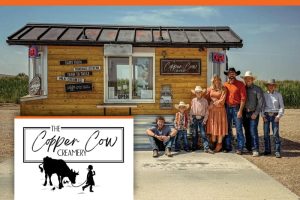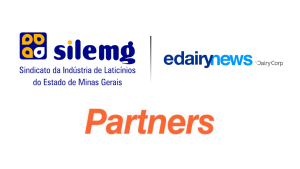
Every day is hump day at Kyle and Holly Hendrix’s dairy farm.
The Hendrixes are the owners of Camelot Dairy, one of only two camel dairy farms in the United States. The other one is in Ramona, Calif.
The couple operates a small regular dairy on their farm north of Wray, just a few miles from the Nebraska state line, and in 2012 attended the National Brown Swiss Show in Oklahoma. There, they met an expert on camel dairying and were intrigued with the possibilities. A year later the family started their own camel dairy with three cows and a bull, and have grown their operation from there.
Camel milk is a good substitute for cow’s milk for people who are lactose intolerant, Hendrix said. Supporters of camel milk as an autism therapy claim that the antioxidants in the milk can reduce reactive oxygen species levels in autistic children. They say that this then reduces children’s autism characteristics.
The milk has myriad other benefits, according to Healthline.com. When it comes to calorie, protein, and carbohydrate content, camel milk is comparable to whole cow’s milk. It’s also lower in saturated fat and offers more vitamin C, B vitamins, calcium, iron, and potassium.
The milk contains insulin-like proteins, which make it a good choice for those with Type 1 and Type 2 diabetes. Insulin is a hormone that helps regulate blood sugar levels. Studies indicate that camel milk provides the equivalent of 52 units of insulin per about 4 cups (1 liter). It’s also high in zinc, which may help improve insulin sensitivity
Camel milk contains compounds that appear to fight various disease-causing organisms. The two main active components in camel milk are lactoferrin and immunoglobulins, proteins that may give camel milk its immune-boosting properties.
It’s important that camel milk is pasteurized, which the Hendrixes do in their milking barn. Afterward the milk is packaged and frozen, and can stay that way for up to a year. Hendrix said most of the milk is sold directly to individual customers all over the country, although he does sell to a few specialty stores that cater to Somali immigrants.
The milk can be expensive, however, costing between $12 and $16 a pint. While some breeds of camels, especially Afghani and Pakistani camels, can produce up to eight gallons a day, Hendrixes’ dromedary camels produce considerably less, and that has to be shared with the camel’s calf. A camel cow will only “drop” her milk when her calf is nearby. The dairyman has just a few minutes to get about one gallon from the cow, and then the calf gets the rest.
According to Culture Magazine, a camel can share her milk with the farmer and her calf for 12–18 months. and then dries up as her calf is weaned.
The Hendrixes have about two dozen camels on the farm. Of those, only nine are producing milk now, but Kyle Hendrix said he plans to expand the herd. The Colorado Department of Agriculture licenses the operation, checking it monthly to make sure it meets health standards.
A camel cow has to be at least five years old before she can have her first calf, and gestation takes 12 to 13 months, so camel dairying is a long-term venture.
It’s a big investment, too, with an unbred heifer costing around $15,000, a producing cow around $30,000 and a bull around $15,000. Compare that with a lactating bovine cow used for dairy costing anywhere from $1,500 to $2,100.
Camels are intelligent, social animals and they seek human company. Working with them means developing personal relationships with them.
“You’ve got to get on a personal level with each one, and just kind of work with them, and work with their personalities,” Hendrix said.
Hendrix pointed out that that the camels’ humps don’t store water, they store fat. Camels can go long periods with insufficient feed and water and still thrive by burning the fat in the hump.
Some of the Hendrix camels have been gentled to ride, and during the holiday season the family lends out some of its stock for “living” nativity scenes in the area.
























